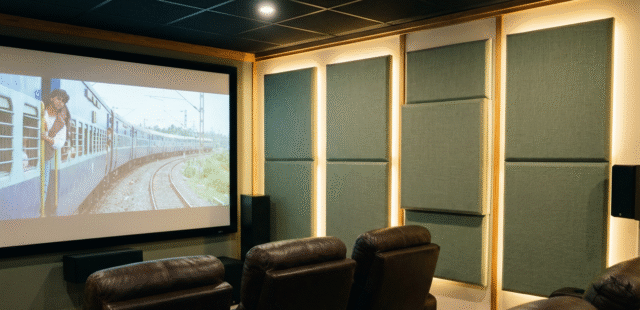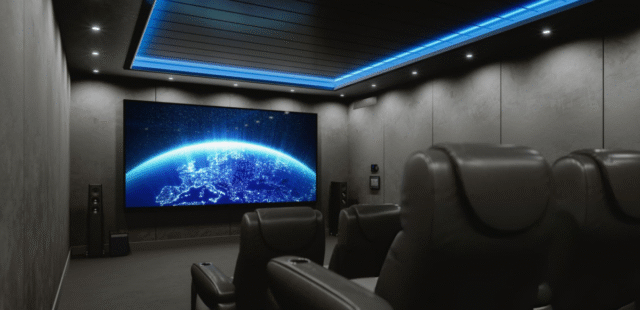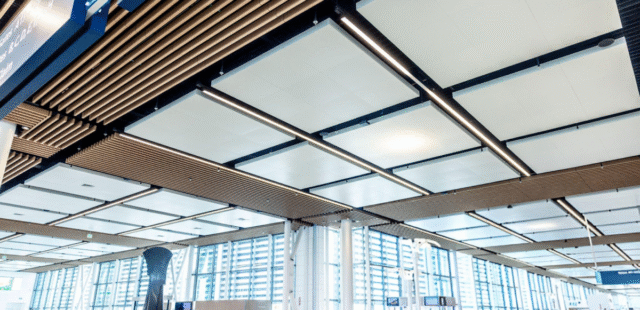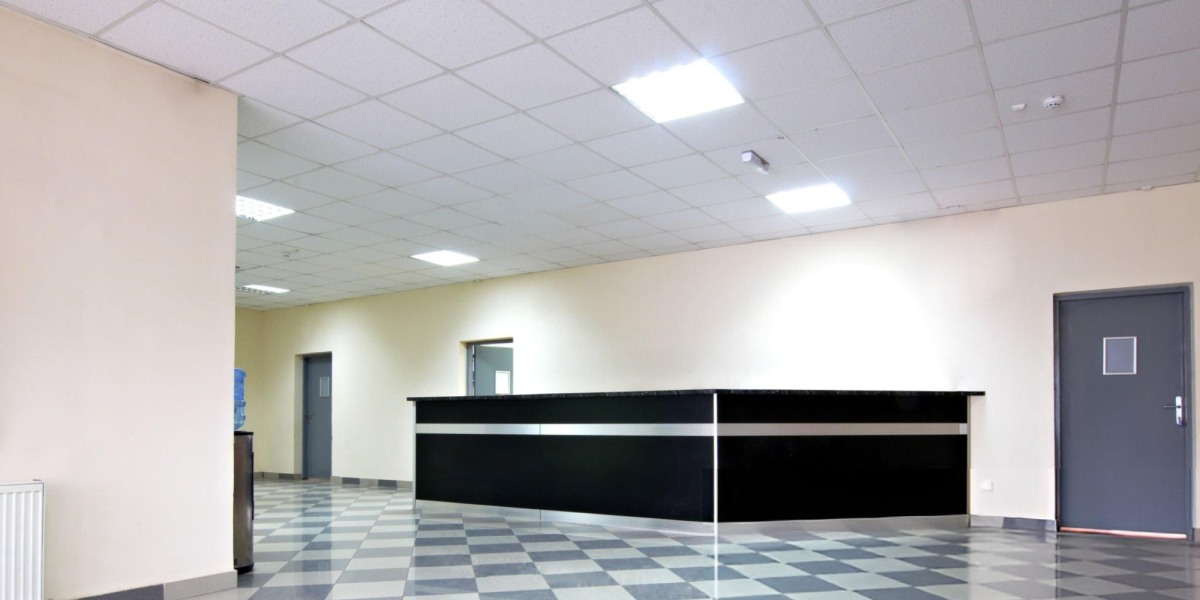
If you’ve ever tried recording an audiobook or voiceover in a regular room, you’ll know something feels off. You hit record, start speaking, and what you hear back isn’t clean or professional. It’s echoey, maybe a bit hollow, and there’s often background hum or random noise you didn’t even notice while recording. Clarity is everything in audiobook narration. The listener needs to hear every word clearly, without distractions. Your tone, pauses, and rhythm matter but none of that comes through properly if the room is working against you.
Here’s the problem: most rooms aren’t built for sound. Hard walls, tiled floors, glass windows, and bare ceilings reflect sound instead of absorbing it. So your voice bounces around, overlaps with itself, and creates that unnatural echo or reverb. Add in a bit of street noise, a fan whirring, or footsteps from upstairs, and suddenly your narration sounds messy, not crisp.
You might think, I’ll just get a better mic. But even the most expensive microphone can’t fix a bad sounding room. In fact, high end mics often make it worse, they’re more sensitive and pick up even more unwanted noise. What actually makes the difference is treating the room. That’s where Fibre Glass Wool Acoustic Panels come in. These panels absorb echo, cut background noise, and stop your voice from bouncing off the walls. That’s why you can see this panels at theatres, offices, Dubbing Studios, Retail Spaces, hotels, restaurants, Railway Waiting Rooms and more.
What Makes a Narration Room ‘Immersive’
It’s Not Just About Being Quiet, It’s About Control
A truly immersive narration space isn’t just quiet, it’s acoustically controlled. That means your voice doesn’t bounce around or get lost in overly soft surfaces. Instead, it sounds balanced. No echo, no hollowness, just a clear, natural tone that stays consistent.
The Room Should Sound Invisible
When a space is properly treated, you don’t hear the room at all. There’s no sense of a small box or a big empty hall. The voice feels close, warm and personal, like the narrator is speaking directly to you, not into a mic in a noisy room.
Sound Directly Impacts Emotional Connection
People listen to audiobooks to get lost in a story. But poor acoustics can snap them out of it. Harsh echoes or background noise make the voice feel distant and distracting. Clean, intimate sound does the opposite, it pulls the listener in and helps them connect emotionally to the story and the voice behind it.
Fibre Glass Wool Acoustic Panels are built to absorb echo, cut sound reflections, and block outside noise. When placed around your narration space, they create a quiet, acoustically neutral environment where your voice sounds professional and the story takes centre stage.
What They’re Made of And Why That Matters
Fibre Glass Wool Acoustic Panels are made from densely packed glass fibres that are excellent at absorbing sound. They trap sound waves, especially mid to high frequencies like the human voice and stop them from bouncing around the room. Unlike soft foam, which only dampens surface noise, these panels absorb sound energy deep within the material. That’s what makes them so effective for voice recording.
What Is NRC And Why 0.90 Is A Big Deal for Narrators
NRC stands for Noise Reduction Coefficient. It’s a rating from 0 to 1 that tells you how much sound a material absorbs. Our panels have an NRC of 0.90, which means they absorb 90% of the sound that hits them. For narrators, that means less echo, fewer reflections, and tighter, clearer recordings. Your voice stays clean and controlled, exactly what you need for professional audio.
How They Compare to Other Materials Like Foam
Acoustic foam is popular in-home studios because it’s affordable and easy to install. You’ll often see it in pyramid or wedge shapes on walls. But here’s the catch, it isn’t very dense. Foam mainly absorbs high frequencies and doesn’t do much for the lower midrange tones where most of the human voice sits.
Fibre Glass Wool Acoustic Panels, on the other hand, are denser and work across a wider range of frequencies. They absorb not just the highs but also the crucial midrange tones, giving your voice more depth, warmth, and clarity. They’re also better at controlling reflections and echo throughout the room.
Why it’s a must for serious narrators
If your voice is your product, your space is your studio. Fibre Glass Wool Acoustic Panels give you the acoustic control that takes your narration from decent to professional. They cut the echo, block the noise, remove distractions and let your voice come through exactly as intended.
What’s Really Happening When You Hear Echo
When you speak in a room with hard surfaces, walls, ceilings, floors, your voice starts to bounce around. These reflections hit the mic a split second later, creating echo or reverb. You might not notice it while speaking, but on playback, it makes your voice sound distant or smeared.
Why Echo Ruins Narration
Echo blurs your words and kills clarity. It softens consonants, muddies your pacing, and makes the delivery feel messy. Even with a great mic and voice, your recording will still sound amateur if the room isn’t treated.
Untreated vs Treated Room, The Real Difference
In an untreated room, your voice bounces off surfaces and clutters the mic with overlapping sound. In a treated space with Fibre Glass Wool Acoustic Panels, those reflections are absorbed. The mic captures only your clean, direct voice, no blur, no reverb, just clarity.
Used by Professionals Across the Board
Fibre Glass Wool Acoustic Panels aren’t just for narration booths. They’re trusted by voice artists, podcasters, audio engineers, and full-scale recording studios, for one simple reason: they work. These panels absorb sound across a wide frequency range, especially in the vocal zone, creating a clean, balanced sound. Whether you’re recording audiobooks, hosting a podcast, or laying down vocals, this is the material professionals rely on to control their environment.
Built To Last
Unlike foam, which can sag, crumble, or lose effectiveness over time, Fibre Glass Wool Acoustic Panels are built to hold their shape and performance for years. They’re rigid, resist humidity, and stay effective even with long term use. Once installed, they don’t need constant adjusting or replacing, they just work, consistently.
Safe, Strong and Studio Ready
High quality Fibre Glass Wool Acoustic Panels are fire-retardant, so they won’t fuel a fire if something goes wrong, a must for any indoor studio. They’re also eco-safe, often made with low-emission binders and wrapped in acoustic fabric that’s safe to handle. Structurally, they’re solid enough to mount on walls or ceilings without sagging or falling apart.
Panel Sizes, Thickness Options, and Mounting Choices
Amazone’s Fibre Glass Wool Acoustic Panels come in a variety of sizes and thicknesses to fit any recording space, from compact voice booths to full scale studios. Standard sizes include 595×595 mm, 1200×1200 mm, 1195×595 mm, and 2100×600 mm. This range makes it easy to customise layouts or retrofit existing rooms without the hassle.
You can choose from three thickness:
- 15mm: Great for basic echo control and surface reflections in quieter or low demand spaces.
- 20mm: The sweet spot for voice recording. It delivers strong absorption in the mid to high frequency range, especially for speech, without eating up space.
- 25mm: Best for larger rooms or tougher acoustic environments where maximum control is key.
We also offer multiple edge finishes to match your aesthetic and installation method, Square, Tegular, and Microlook, so you can integrate panels into ceilings or wall grid systems seamlessly.
Best Picks for Small Booths vs Large Studios
For small narration booths or home setups, go with 15 mm panels in the 595 × 595 mm size. They’re compact, easy to handle, and excel at absorbing mid to high frequencies, right where the human voice lives. You get reliable acoustic control without eating into your space.
In larger studios or professional recording rooms, mix sizes and thicknesses. Place 25 mm panels in corners and overhead to trap deeper reflections and curb low frequency build up. On walls, use bigger formats like 1195 × 595 mm or 2100 × 600 mm to cover more surface area quickly. Thicker panels plus wider coverage delivers a balanced, controlled sound throughout the room.
Installation Options
These panels adapt to whatever you’re building: wall mounted, ceiling mounted or dropped into a T‑grid system. Fixed booth or modular studio, Amazone by Furnitech’s Fibre Glass Wool Acoustic Panels slip in effortlessly and stay put, no fuss, no constant tweaking.
Ready to Sound Professional? Let Your Voice Take Centre Stage
Treat your space with Amazone by Furnitech’s Fibre Glass Wool Acoustic Panels and hear the difference instantly. Whether you’re recording in a small home booth or a large studio, our panels give you the clarity, control, and sound quality you need to produce professional grade audio. Contact Us today to choose the right panels for your setup and build a space that lets your voice shine.
TL;DR
If your recordings sound echoey, hollow, or unclear, the issue isn’t your mic, it’s your room. Hard surfaces bounce sound around and kill clarity. Fibre Glass Wool Acoustic Panels from Amazone by Furnitech absorb echoes, block background noise, and deliver clean, professional sound. Trusted by narrators, podcasters, and studios, they come in multiple sizes and thicknesses to suit any space. They’re easy to install, built to last, and fire-safe, so your voice sounds exactly the way it should.
__
As a premier distributor of acoustic materials across the Indian sub-continent, we take pride in offering a diverse range of top-notch solutions for sound management. Our extensive selection includes Polyester Fibre Acoustic Panels, Black Fibre Glass Wool Acoustic Ceiling Tiles, Cloud Acoustic Ceiling Panels, Fabric Wrapped Acoustic Panel, Fibre Glass Wool Acoustic Ceiling Panel, MDF Acoustic Panels, Perforated Gypsum Acoustic Boards, White Fibre Glass Wool Acoustic Ceiling Tiles, and Wood Wool Acoustic Board. With a commitment to quality and customization, we provide tailored acoustic panels that cater to your unique needs and budget. Whether you’re an office owner, a school administrator, an auditorium sound engineer, an interior designer, or an architect, our products are designed to enhance sound quality and elevate the aesthetics of any space. Experience the difference with our premium acoustic solutions.

















